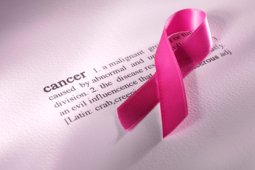Tests and Diagnosis For Breast Cancer
Apr 19, 2022
Breast cancer patients usually present themselves with some lump in the breast or bleeding / puckering of nipple over weeks.
The cancer physician to diagnose the reason for the same and to rule out cancer can order few tests, which are as follows :
The same is defined as the Triple Assessment Test –
- Clinical examination: palpation of the breast and axilla.
- Imaging (usually mammography, ultrasonography, or both)
- Needle biopsy
Post the triple assessment the type, location and the stage of cancer is diagnosed. Depending on these factors the treatment protocol is decided – surgical, medical and radiation.

Why the Tests?
Previously the surgical techniques involved radical breast removal which was a very extensive surgery. Gradually it turned towards modified radical breast removal which is finer and recently with early breast cancer presentations the aim is towards breast conservation surgery which is finest ,most appropriate and acceptable technique. In this the woman can keep her breasts and not go through a removal procedure.
Majority of the times the screening is done with mammography on high risk females with age more than 50 years and /or family history of cancers.
Some patients with dense breast needs sonographic evaluation also. Generally these patients if show some presence of cancer, undergo core needle or true cut biopsy.
Small size breast cancers do not need advanced imaging techniques before surgery but large size breast cancers need CT scan of chest and abdominal sonogram also. More recently these patients undergo PET CT scan before surgery.
For some patients with doubtful breast lesions physician takes the help of MRI of breast to differentiate benign and malignant lesions.
Of course not every breast lesion is cancer, majority of them are benign and disappear with conservative management.
It is very important that physician orders the biopsy of suspicious lesion earliest and pathologist categorises the biopsy specimen into benign and malignant lesion. Moreover unnecessary tests increase the fear of cancer in females and breast awareness is encouraged rather than testing in general population without increased risk of breast cancer.









